
Saving Endangered Oaks in Menlo Oaks
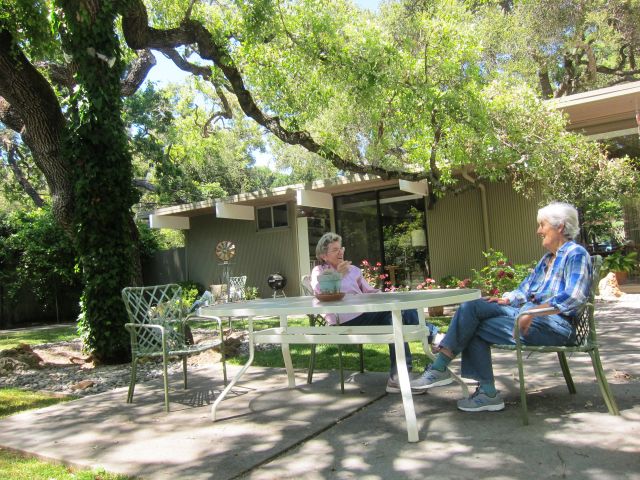 |
|
|
For two years now a group of people who love the trees that give much of the Peninsula so much of its bucolic character have been fighting to save them. It looks like they may have some success.
One of the epicenters of this tree lovers’ movement is a mini-Eichler subdivision of seven mostly oak-shaded homes in the aptly named neighborhood of Menlo Oaks. That’s because one of its residents is Judy Horst, one of the leading lights behind MOTA.
Menlo Oaks Tree Advocacy, to give the group its full title, regards trees as “assets,” its website states.
“Our trees keep the neighborhood vibrant and property values high,” the group states. “They are part of our indigenous landscape and have grown in our neighborhood for many years – in some cases for centuries. Significant old-growth and heritage trees are well established and face far fewer dangers from the drought.”
Menlo Oaks, which is an unincorporated neighborhood, has seen much loss of tree cover lately, Judy says – though not, thankfully, among her Eichler enclave. But the loss affects everyone, she says.
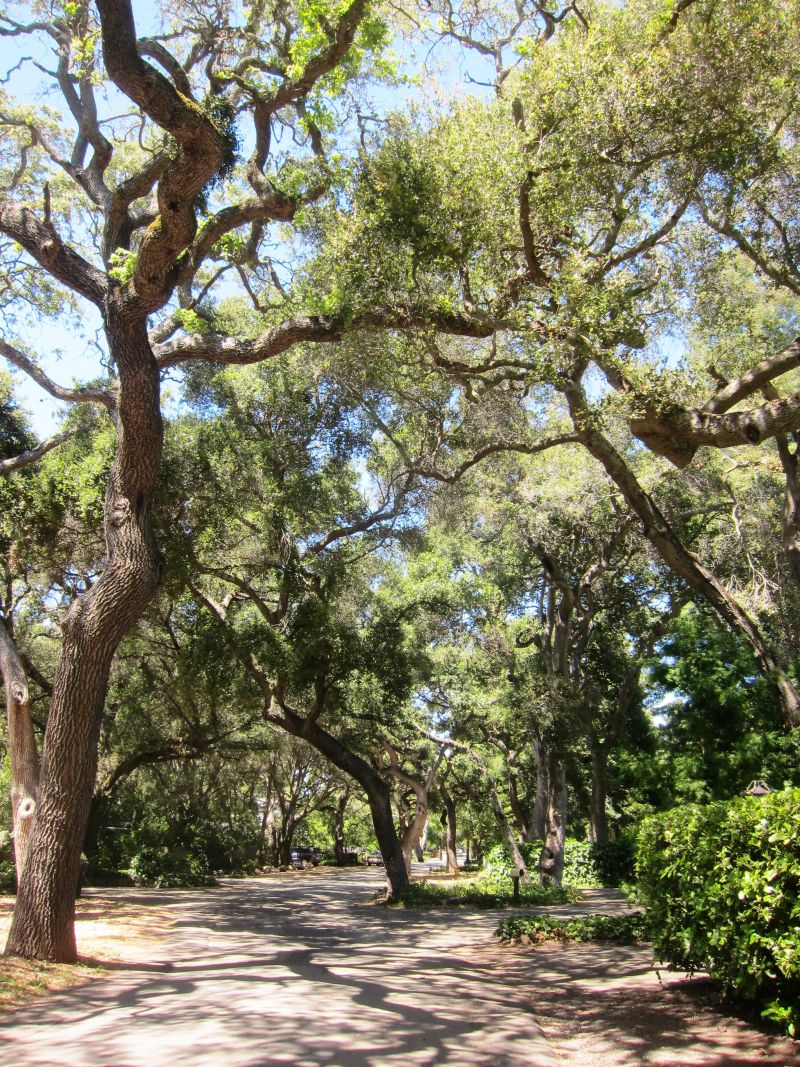 |
|
|
“My neighborhood is losing its canopy,” says Judy, a 30-year resident. “The canopy takes carbon dioxide from the air, from the freeway that’s not even a mile away from here, just southeast of us. The trees are good for my health. And people are taking them out and planting water-sucking ornamentals that are not native, instead."
“They keep us cool,” Judy says of the live oaks that Eichler preserved when he built these homes.
Then she refers to her next-door neighbor, whose oaks were lost to Sudden Oak Death about 30 years ago. “My neighbor has no trees. She sits in the sun in the summer, and it’s horrid. Her house is hot. Mine is not.”
“The trees reduce stress,” she adds, “and they add to our property values.”
Judy says trees are particularly important in Eichler neighborhoods, where the view through glass walls to the sky is a crucial part of the living experience. “Eichler saw in his home designs that people wanted to look outdoors. You can put in gardens. But there is also the sky.”
When MOTA was new, Judy even reached out to the Eichler Network wondering whether, as she suspected, “Eichler had a philosophy about trees, since so many of his homes were built utilizing the trees -- unlike today's developers who mow them down, with and without permits to remove them -- just because they are in the way.”
Maybe he did. But so far as we know, Joe’s tree philosophy was never enunciated in words.
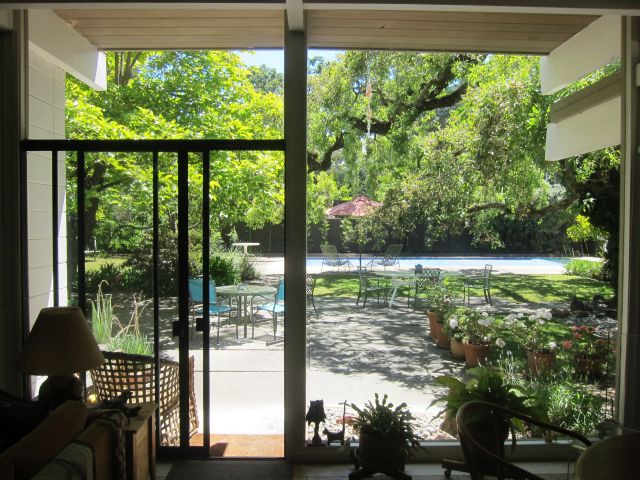 |
|
|
“All of the Eicher homes here utilize the trees, and so I thought maybe somewhere there was a ‘philosophy’ he had about this, much like his egalitarian approach to homeowners,” Judy wrote.
When the CA-Modernist spent time in Menlo Park two years ago, the focus was on loss of Eichler homes to new development. The same problem affects the trees. MOTA was founded about two years ago.
“Developers come in and take them down,” Judy says. “One developer was subdividing a property and then changed his plans, so a tree would have to come out. The arborists always say the trees have bad form and they have tree diseases.”
She cites another recent instance of a project that “brought in a Caterpillar to the property, and it’s parked on the roots of an oak tree. We’re working with the planner to move the caterpillar and to protect the tree better.”
“What happens a lot,” she says, “is a tree is damaged they say ‘accidentally,’ so now the tree is damaged so they have to take it out.”
One goal of MOTA is to educate county staff and supervisors, and regular folks, about the value of trees and the need to care for them.
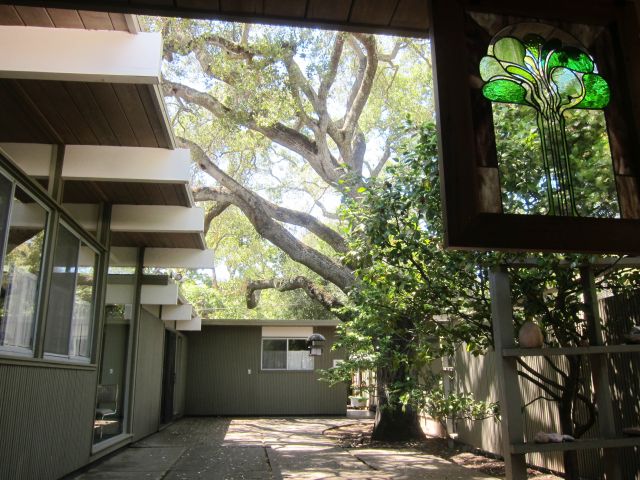 |
|
|
“New people are moving into the area who don’t know what to do with the oaks. They think the oaks are dangerous. They’re going to fall and kill my children.”
“Our goal isn’t to stop people from doing what they want to do, but to get them to adjust their plans to save the trees.”
Judy understands that falling limbs can be a hazard. “I have six, seven, eight limbs over my house and some are a foot in diameter. They could do damage.”
But good tree care can prevent problems, she says, noting that she uses an annual injection to ward off Sudden Oak Death.
“You have to take care of these trees,” she says. “They’re like a pet. You don’t take them to a vet, but you do call in an arborist."
One of MOTA’s goals may be accomplished within a couple of years, Judy says. The county of San Mateo has pulled a working group of advocates, developers, arborists, and others to hash out an update of the 20-plus-year old regulations designed to preserve significant trees.
“We’re listening to people from the county and to so-called experts,” she says. “There are Eichlers throughout the county, so many people in Eichlers will be affected.”
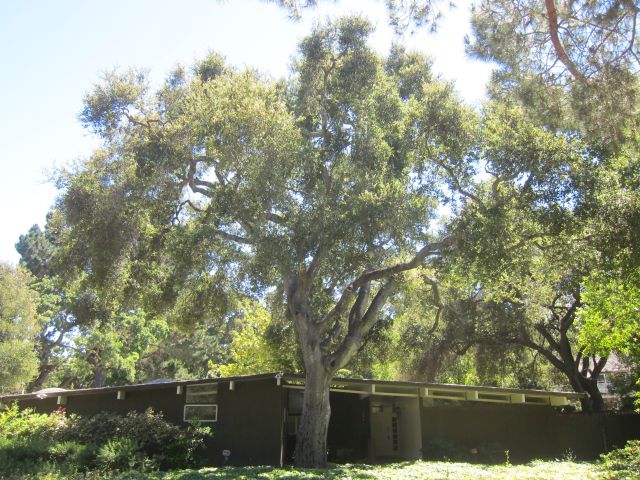 |
|
|
She says that of nearby cities, Palo Alto in Santa Clara County probably has the best regulations, citing their guide for tree preservation, while Menlo Park and Atherton also have stronger rules than unincorporated areas in San Mateo.
But even in these cities, she says, trees are too often removed for no good reason.
Although she takes a broad, regional look at the issue, Judy Horst always keeps her own neighborhood in mind.
“These trees are what Menlo Oaks was named for. We don’t want it to be ‘Menlo Plains’ or 'Menlo Fruit Trees.’ We live across from the school, where they take care of their oaks very well.”
- ‹ previous
- 507 of 677
- next ›



